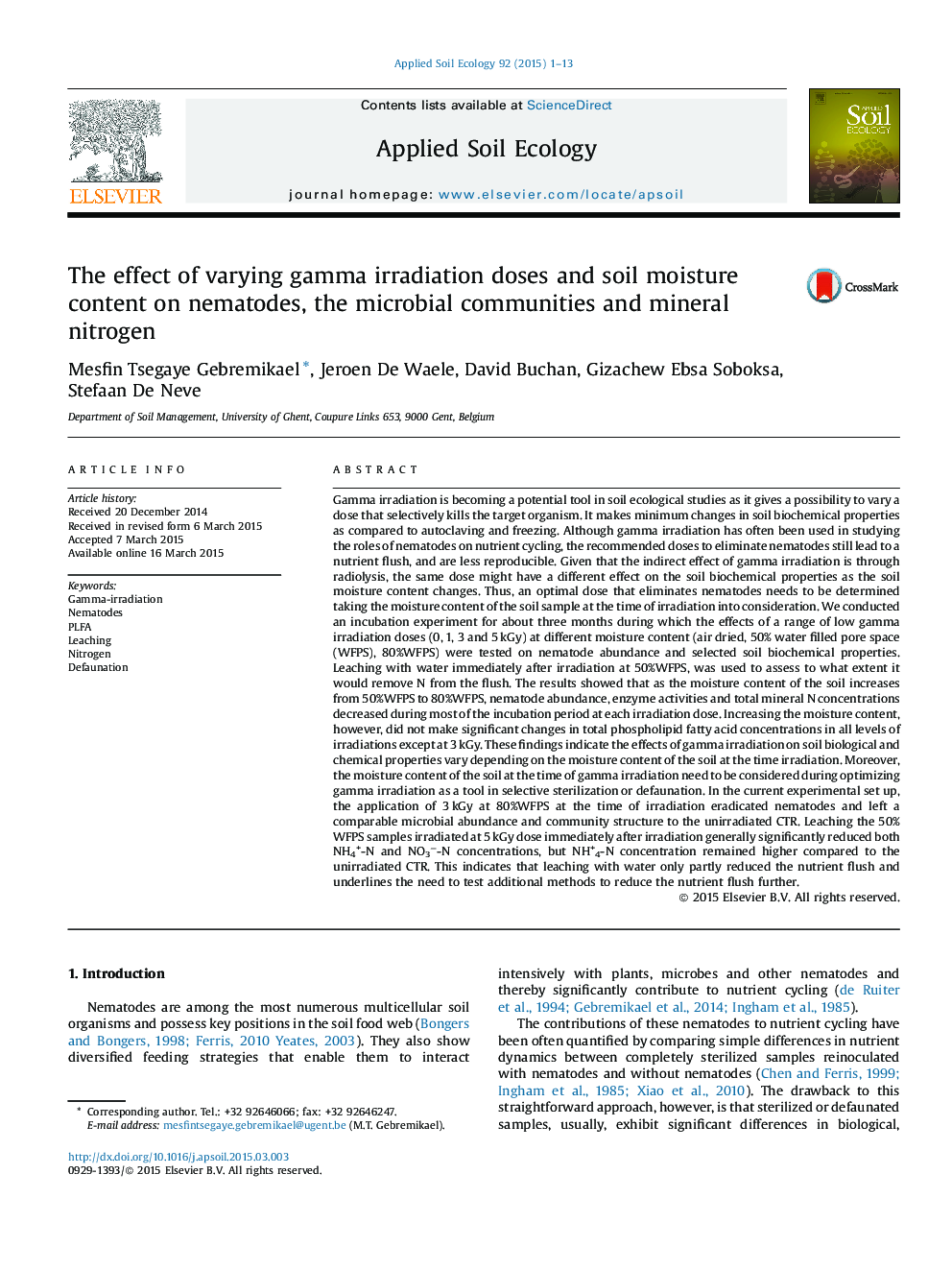| کد مقاله | کد نشریه | سال انتشار | مقاله انگلیسی | نسخه تمام متن |
|---|---|---|---|---|
| 4381988 | 1617791 | 2015 | 13 صفحه PDF | دانلود رایگان |
• Soil samples at different moisture content received low gamma irradiation doses (0, 1, 3, 5 kGy).
• The same dose showed different effects on soil depending on the moisture content.
• Increasing the moisture content from 50 to 80% WFPS killed more nematodes.
• Enzymatic activities and total mineral N concentration decreased as soil moisture increased.
• Leaching with water after irradiation reduced mineral N concentration.
Gamma irradiation is becoming a potential tool in soil ecological studies as it gives a possibility to vary a dose that selectively kills the target organism. It makes minimum changes in soil biochemical properties as compared to autoclaving and freezing. Although gamma irradiation has often been used in studying the roles of nematodes on nutrient cycling, the recommended doses to eliminate nematodes still lead to a nutrient flush, and are less reproducible. Given that the indirect effect of gamma irradiation is through radiolysis, the same dose might have a different effect on the soil biochemical properties as the soil moisture content changes. Thus, an optimal dose that eliminates nematodes needs to be determined taking the moisture content of the soil sample at the time of irradiation into consideration. We conducted an incubation experiment for about three months during which the effects of a range of low gamma irradiation doses (0, 1, 3 and 5 kGy) at different moisture content (air dried, 50% water filled pore space (WFPS), 80%WFPS) were tested on nematode abundance and selected soil biochemical properties. Leaching with water immediately after irradiation at 50%WFPS, was used to assess to what extent it would remove N from the flush. The results showed that as the moisture content of the soil increases from 50%WFPS to 80%WFPS, nematode abundance, enzyme activities and total mineral N concentrations decreased during most of the incubation period at each irradiation dose. Increasing the moisture content, however, did not make significant changes in total phospholipid fatty acid concentrations in all levels of irradiations except at 3 kGy. These findings indicate the effects of gamma irradiation on soil biological and chemical properties vary depending on the moisture content of the soil at the time irradiation. Moreover, the moisture content of the soil at the time of gamma irradiation need to be considered during optimizing gamma irradiation as a tool in selective sterilization or defaunation. In the current experimental set up, the application of 3 kGy at 80%WFPS at the time of irradiation eradicated nematodes and left a comparable microbial abundance and community structure to the unirradiated CTR. Leaching the 50%WFPS samples irradiated at 5 kGy dose immediately after irradiation generally significantly reduced both NH4+-N and NO3−-N concentrations, but NH+4-N concentration remained higher compared to the unirradiated CTR. This indicates that leaching with water only partly reduced the nutrient flush and underlines the need to test additional methods to reduce the nutrient flush further.
Journal: Applied Soil Ecology - Volume 92, August 2015, Pages 1–13
